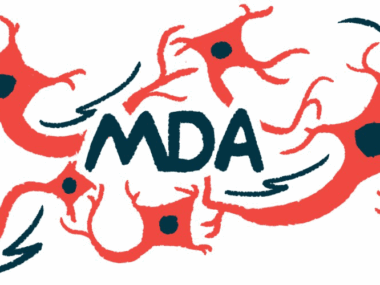Baby boy with SMA reaches motor milestones with early Evrysdi use
Treatment was started 12 days after birth for newborn with SMN1 mutations
Written by |

Starting Evrysdi (risdiplam) very early — just 12 days after his birth and before his symptoms appeared — was safe and helped a boy with spinal muscular atrophy (SMA) achieve key motor milestones, such as sitting and walking, within the normal time window.
Adding to clinical evidence that starting newborns on Evrysdi before the onset of symptoms supports normal or near-normal development, “this case preliminarily demonstrates the feasibility and safety of initiating therapy only 12 days after birth,” researchers wrote. The boy’s case, “Pre-symptomatic risdiplam treatment for spinal muscular atrophy initiated at 12 days post-birth: 14-month safety and developmental outcomes,” was described in a letter to the editor in Pediatric Investigation.
SMA is chiefly caused by mutations in the SMN1 gene that result in the gradual loss of motor neurons, that is, nerve cells that control voluntary movement. A second gene called SMN2 can partially compensate for mutations in SMN1, with more copies usually meaning milder symptoms.
Disease-modifying therapies have changed the natural course of SMA and studies show that starting as early as possible offers the most benefit, with new care strategies needed to meet patients’ changing needs.
Here, researchers in China report about a baby boy who began Evrysdi shortly after being diagnosed with SMA through newborn screening. China is running pilot programs for newborn screening to enable earlier diagnosis and therapeutic intervention for SMA.
Prenatal scans revealed brain cysts that later resolved. While follow-up genetic testing showed that both parents carried deletions in a region of the SMN1 gene, they declined further testing during the pregnancy. The boy was delivered by cesarean section at 37 weeks of gestation.
Gains with early Evrysdi treatment
At 9 days old, he tested positive for SMA through newborn screening. He had no SMN1 gene copies and three copies of SMN2. “According to expert consensus, immediate initiation of treatment is recommended for asymptomatic SMA patients with three SMN2 copies,” the scientists wrote.
Evrysdi has been approved to treat SMA in China since 2021, originally for patients 2 months and older. “Despite the off-label use of [Evrysdi], which is common in rare diseases where approved treatments are limited, the parents decided to start after careful consideration,” the researchers wrote.
After starting Evrysdi, which is given daily, the baby had five follow-up visits to track his progress. Starting at the second visit, doctors used the Children’s Hospital of Philadelphia Infant Test of Neuromuscular Disorders (CHOP-INTEND), which measures muscle strength and function on a 64-point scale, where higher scores indicate better muscle function.
At 13 days old, his limbs moved actively despite slightly reduced upper limb tone. He also showed “good nutrition, a loud cry, and normal [vital signs],” the researchers wrote. By 33 days, “he maintained good nutrition and motor function,” scoring 42 points in the CHOP-INTEND.
At about 4 months, the boy could control his head and roll over, and his CHOP-INTEND score increased to 60 points. The daily dose of Evrysdi oral solution had increased from 0.6 to 2.3 mL. By 9.5 months, he could sit, pull to stand, and kneel on all fours. His dose increased to 3 mL daily and he scored the full 64 points in the CHOP-INTEND.
“Assessments indicated gross and fine motor skills within the normal range,” but “motor skills were slightly below average, warranting continued exercise,” wrote the researchers, who said “overall developmental progress was favorable.”
By 14.5 months, the boy could walk on his own. Doctors then used the Hammersmith Functional Motor Scale Expanded for SMA to test more advanced motor skills such as rolling, sitting, crawling, and standing. He scored 43 out of 66 points, and his daily dose of Evrysdi was adjusted to 3.3 mL.
No side effects were observed over 14 months. While Evrysdi is generally considered safe, the boy’s case represents a relatively short follow-up period and doctors must continue monitoring for potential side effects such as gastrointestinal damage or low blood sugar, said the researchers.
“Long-term monitoring is necessary to comprehensively assess therapeutic efficacy. Future research involving more patients is required to fully assess the efficacy and safety,” they wrote.







